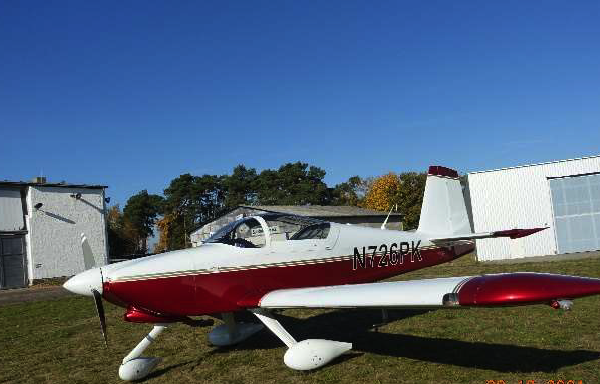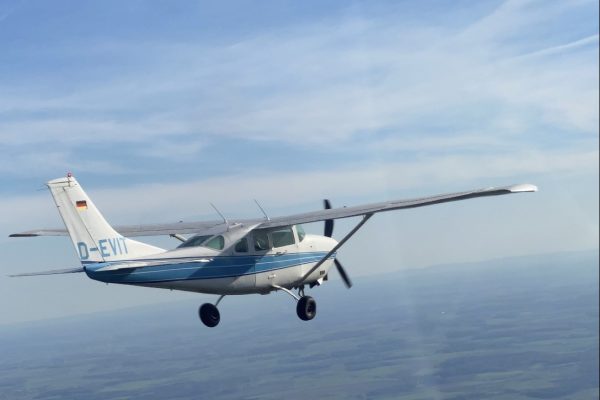Diese Website verwendet Cookies, damit wir dir die bestmögliche Benutzererfahrung bieten können. Cookie-Informationen werden in deinem Browser gespeichert und führen Funktionen aus, wie das Wiedererkennen von dir, wenn du auf unsere Website zurückkehrst, und hilft unserem Team zu verstehen, welche Abschnitte der Website für dich am interessantesten und nützlichsten sind.
FANJET 600
- TOW: 2300 kg (mil.), 1800 kg (civ.)
- Cruise Speed (low level): 200 kts
- Rate of Climb: 3000 ft/min
- Ceiling: 25.000 ft
- G-limits: +6/-3 g
- Powerplant: ROLLS ROYCE M250-C30, 650 shp
- Seats: 2
The Fanjet 600 was built as a jet training aircraft by Rhein-Flugzeugbau (RFB), Mönchengladbach. The main customer was the Thai Air Force, which ordered 47 aircraft. Our aircraft is one of 3 original factory aircraft from RFB with factory number 005. The former Stencel ejection seats/extension systems were replaced by Spekon parachutes. The front and rear cockpits are almost identical – the fanjet can be flown from front and rear. If necessary, there is access to all three former Fanjet factory aircraft, e.g. for formation flights with the same aircraft type.
Piper PA42
- MTOW: 4990 kg
- Cruise Speed: 275 kts
- Rate of Climb: 2400 ft/min
- Ceiling: 33.000 ft
- Powerplant: Pratt & Whitney Canada P&WC PT6A-41, 2×720 hp
- Seats: 9-10
The PA42 was built by Piper Aircraft – as a business aircraft, for passenger flights, but also extensively for cargo and ambulance flights and as a training aircraft for commercial pilots. The PA42 has been used in flight training for pilots of Lufthansa, Alitalia and the German Armed Forces. Currently, flight mechanics of the German Armed Forces are trained on the aircraft. Our aircraft comes from an aviation company (AOC). It is extremely comfortably equipped, including an on-board toilet for long flights.
Piper PA31T
- MTOW: 4080 kg
- Cruise Speed: 250 kts
- Rate of Climb: 2800 ft/min
- Ceiling: 29.000 ft
- Powerplant: Pratt & Whitney Canada P&WC PT6A-28, 2×620 hp
- Seats: 7
The PA31T was built by Piper Aircraft – as a business aircraft, for passenger flights, but also for ambulance flights. The very agile aircraft can take off and land from extremely short places. Over a 15m obstacle, only 600m are needed for take-off and 570m for landing, provided appropriate conditions and pilot skills. This performance is further enhanced by a modern 5-blade MT propeller.
VAN´S RV-9 A
- MTOW: 795 kg
- Cruise Speed: 140 kts
- Rate of Climb: 2000 ft/min
- Ceiling: 19.000 ft
- Powerplant: Lycoming IO-320 – 160 HP
- Seats: 2
The RV9-A was designed by Van’s Aircraft, Inc – as a two seat sport aircraft. All VAN`S aircraft are available as KIT aircraft only. The RV9-A features a 160HP Lycoming engine. Compared to other models, the RV9-A’s low fuel consumption at high cruising speed makes it especially suitable for cross country flights – or perfect as an IFR trainer.
TECNAM P96
- MTOW: 495 kg
- Cruise Speed: 100 kts
- Rate of Climb: 1000 ft/min
- Ceiling: 10.000 ft
- Powerplant: ROTAX 912, 80 hp
- Seats: 2
The P96 Golf was built by Tecnam Costruzioni Aeronautiche – as a trainer and touring aircraft. Due to the economical engine, the Tecnam can stay in the air up to 5h and cover long distances.
Zenair CH 701
- MTOW: 495 kg
- Cruise Speed: 85 kts
- Stall Speed: 24 KTS
- Rate of Climb: 2000 ft/min
- Ceiling: 10.000 ft
- Powerplant: ROTAX 912 – 100 HP
- Seats: 2
The CH 701 was built by Zenith Aircraft Company – as an “off-airport” and “short-field” aircraft. The STOL (Short Take off and Landing) is characterized by the flight characteristics that give it its name. On paved ground, only 30 meters (with max. MTOW) are required for take-off. The low stall speed of 24 KTS allows test flights at very low speed.
CESSNA 206 TURBO
- MTOW: 1633 kg
- Cruise Speed: 140 kts
- Rate of Climb: 1080 ft/min
- Ceiling: 26.000 ft
- Powerplant: Continental TSIO-520 -310 HP
- Seats: 6
The C206 Turbo Stationair was built by Cessna as a 6-seat all-rounder. The 206 has a cargo door and comfortable skydive equipment. This allows for drop tests or photo flights.
Bölkow BO-105
- MTOW: 2500 kg
- Cruise Speed: 120 kts
- Rate of Climb: – ft/min
- Ceiling: 17.000 ft
- Powerplant: 2x Rolls-Royce 250-C20B – 840 hp
- Seats: 5
The BO 105 is the first helicopter to feature a rigid rotor head without flapping and swiveling joints. The rotor head is made of titanium and includes elastomer elements. The fiberglass-reinforced rotor blades have been optimized for weight and aerodynamics. Despite its low take-off weight, the BO 105 is a twin with two turbines. The field of application ranges from police, military (incl. aerobatics) to mountain rescue and civil protection.










